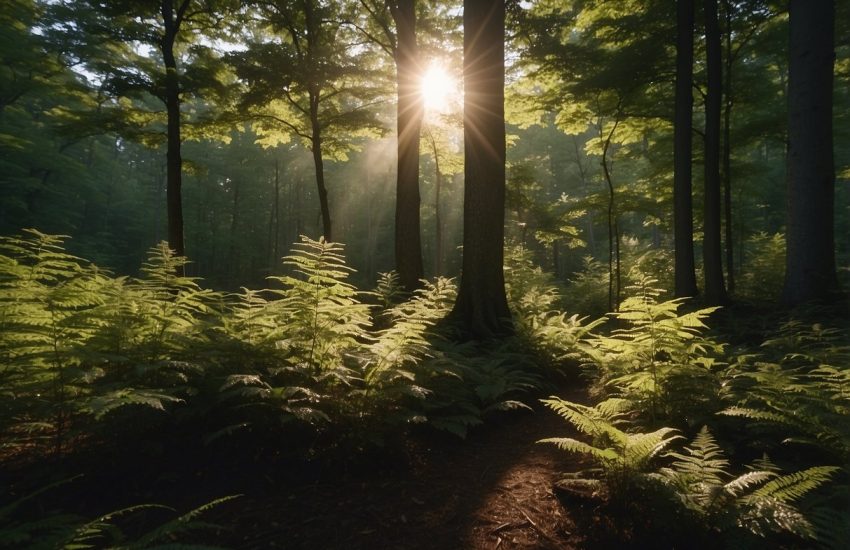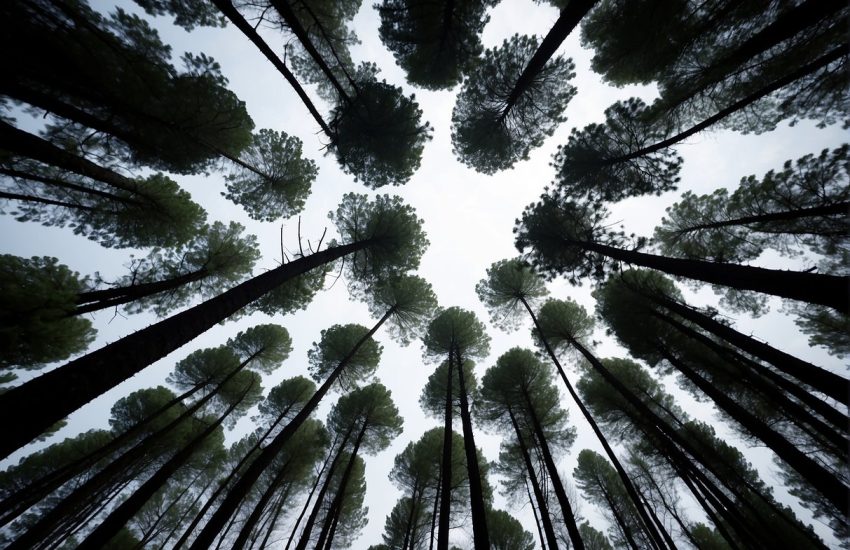Most Common Trees in New Jersey: A Comprehensive Guide
New Jersey is a state with a diverse landscape, ranging from the Appalachian Mountains to the Atlantic Ocean. The state is home to a variety of tree species, both native and non-native. Understanding the most common trees in New Jersey can help residents and visitors appreciate the state’s natural beauty and the role that trees play in supporting wildlife and the environment.

One of the most common native trees in New Jersey is the red oak (Quercus rubra). This tree is found throughout the state and is prized for its strong wood and attractive fall foliage. Another native tree that is common in New Jersey is the eastern white pine (Pinus strobus). This tall, straight tree is often used for lumber and is also important for wildlife habitat.
Non-native trees are also prevalent in New Jersey, particularly in urban and suburban areas. These trees were introduced to the state for their ornamental value and shade-providing qualities. Some of the most common non-native trees in New Jersey include the Norway maple (Acer platanoides), the Japanese maple (Acer palmatum), and the Bradford pear (Pyrus calleryana). While these trees are not native to the area, they have become an important part of the state’s landscape and provide many benefits to wildlife and humans alike.
Common Native Trees of New Jersey
New Jersey is home to a wide variety of native trees that grow in the state’s diverse ecosystems. Some of the most common native trees in New Jersey are deciduous trees and evergreen trees.
Deciduous Trees
Deciduous trees are trees that lose their leaves in the fall and grow new leaves in the spring. They are a popular choice for landscaping in New Jersey because of their beautiful foliage and shade.
One of the most popular deciduous trees in New Jersey is the oak tree. Oak trees are known for their large size and strong wood, which makes them a popular choice for furniture and flooring. They also provide excellent shade in the summer and their leaves turn a beautiful shade of red in the fall.
Another popular deciduous tree in New Jersey is the flowering dogwood. This tree is known for its beautiful pink or white flowers that bloom in the spring. It is a small tree that is perfect for landscaping and it provides excellent shade.
Evergreen Trees
Evergreen trees are trees that keep their leaves all year round. They are a popular choice for landscaping in New Jersey because they provide year-round greenery and can also provide shade.
One of the most common evergreen trees in New Jersey is the white pine. White pines are tall trees that can grow up to 100 feet tall. They are known for their soft needles and provide excellent shade in the summer.
Another popular evergreen tree in New Jersey is the American holly. American hollies are known for their dark green leaves and bright red berries, which make them a popular choice for holiday decorations. They are also a popular choice for landscaping because they provide year-round greenery and shade.
Overall, New Jersey is home to a wide variety of native trees that can provide beauty, shade, and greenery to any landscape. Whether you’re looking for a deciduous tree or an evergreen tree, there are plenty of options to choose from in New Jersey.
Tree Benefits and Planting Considerations

When considering planting trees in New Jersey, it is important to think about the benefits they provide and the planting considerations that ensure their success.
Ecological Impact and Wildlife Support
Trees play a vital role in the ecosystem by providing habitat for wildlife, improving air and water quality, and reducing the impact of climate change. Native trees, such as the flowering dogwood and oak tree, are particularly important as they have evolved to support the local wildlife and are better adapted to the local climate.
Trees also serve as a food source for many animals, including squirrels, deer, and birds. They provide shelter and nesting sites, particularly along riverbanks and in the Pine Barrens. It is important to consider the ecological impact of planting trees and choose species that will provide the most benefit to the local ecosystem.
Landscape Design and Tree Selection
In addition to their ecological benefits, trees are also important for landscape design. They can serve as a focal point, provide privacy, and add shade and accent to a yard. When selecting a tree for landscaping, it is important to consider the tree’s size, shape, and growth rate, as well as its fall foliage and flowering patterns.
Some popular trees for landscaping in New Jersey include the magnolia and tsuga. It is also important to consider the soil and light conditions of the planting site. Trees generally prefer well-drained, acidic soil and partial shade.
When planting trees, it is important to follow proper planting techniques and provide adequate care and maintenance. Services such as those offered by a nursery or tree care professional can help ensure the success of the new tree. It is also important to be aware of any construction or other activities that may impact the tree’s health and take steps to protect it.
In conclusion, planting trees in New Jersey can provide numerous benefits, both ecological and aesthetic. By carefully considering the species selected and planting conditions, and providing proper care and maintenance, trees can thrive and enhance the local environment for years to come.


